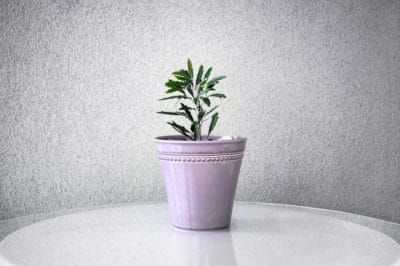What is Bonsai?
Bonsai is a gardening art form practiced in Japan and other Asian countries such as China and Vietnam. The concept of bonsai (called penzai or penjing in China and hòn non bộ in Vietnam) is to create dwarfed plants or miniature landscapes. There are specific rules for creating the shapes according to aesthetic principles and specially designed bonsai pots are used in this work.
Principles of Bonsai
Bonsai principles are at least 1,000 years old. They include:
- Miniaturization – a tree is to be kept small while looking mature.
- Proportion – all parts of the plant and scene should be in proportion.
- Asymmetry – a bonsai should not be perfectly symmetrical.
- Invisibility – this refers to the expectation that the designer leaves no visible traces of his/her work.
- Emotion – the bonsai should elicit an emotion such as poignancy.
About Ming Aralia
A native of Southeast Asia, the luxurious foliage of the ming aralia (its name means “many shaded”) top a shrub that grows vertically. This is advantageous in bonsai treatment as many bonsai subjects tend to branch sideways. Even when mature, the leaves are small, with seven or more leaflets per stalk. The stem can be shaped as a single or double trunk, increasing the resemblance to a mature tree.
Environmental Conditions for Ming Aralia
Ming aralias are tropical plants, which means they must have a warm environment. While they also like humidity, they don’t like wet feet. Plant in well-drained soil and be careful not to over-water. Your pot should have one or more drainage holes to prevent soggy soil. Ming aralias should have either full sun (not at midday) or bright indirect light. Repot once a year in spring and keep roots confined.
Managing Bonsai
The artificial environment of a bonsai setting means you must pay close attention to your plant’s needs. It is common to place a bonsai in a pot that is small for the size of the plant, which means you may have to water frequently. You must also balance the plant’s needs for nutrients with the need to control growth. Regular pruning and trimming are required to shape the plant and control size.
